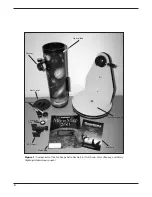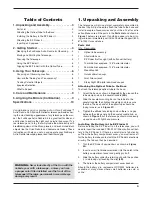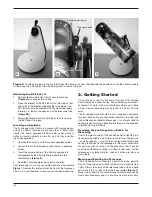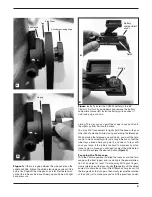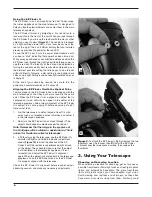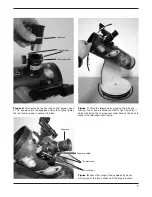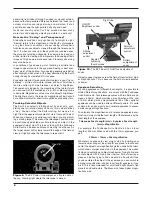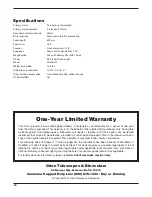
9
The best rule of thumb with eyepiece selection is to start with
a low power, wide-field eyepiece, and then work your way up
in magnification. If the object looks better, try an even higher
magnification eyepiece. If the object looks worse, then back
off the magnification a little by using a lower-power (longer
focal length) eyepiece.
What to Expect
So what can you expect to see with your FunScope Astro
Dazzle 4.5? You should be able to see bands on Jupiter, the
rings of Saturn, craters on the Moon, the waxing and waning
phases of Venus, and many bright nebulas and star clusters.
Do not expect to see color in faint objects, however, as you do
in photographs of those objects. Unlike film or digital camera
sensors, our eyes are not sensitive enough to see color in
faint deep-sky objects except in a few of the brightest ones,
and in the planets.
But as you observe keep in mind that you are seeing these
cosmic denizens using your own telescope with your own
eyes! You’re seeing objects in the eyepiece in real-time, and in
many cases that light has traveled mind-boggling distances to
reach Earth, and over incredible lengths of time – sometimes
even thousands or millions of years. When you gaze at the
ethereal glow of the Andromeda galaxy (M31), for example,
you’re seeing ancient light – light that left the galaxy a cou-
ple million years before Neanderthals roamed present-day
Europe! In this way you can think of your telescope as a mod-
ern day time machine. How cool is that?
Orion carries a variety of useful maps and guides to help
you find your way around the night sky and get the most out
of your telescope. Visit
www.OrionTelescopes.com and
browse our selection. You’ll also find plenty of helpful FREE
resources in the Community section of our website to get you
started in your astronomical pursuits.
Enjoy! And let us know if you need any assistance get-
ting up and running with your FunScope Astro Dazzle 4.5.
We’re always ready and willing to help! Send an email to
[email protected] or call us toll-free at 800-676-
1343.
4. care and Maintenance
Store your telescope in a clean, dry, dust-free place, safe
from prolonged exposure to sunlight and humidity. Sunlight
can damage the printed vinyl finish of the telescope. Do not
store the telescope outdoors, although storage in a garage
or shed is okay. Small components like eyepiece and other
accessories should be kept in a protective box or storage
case. Keep the dust caps on the front of the scope and on the
focuser when the scope is idle.
You should not have to clean the telescope’s mirrors. Covering
the telescope with the dust cap when it is not in use will help
prevent dust from accumulating on the mirrors. Small specks
of dust or flecks of paint have virtually no effect on the visual
performance of the telescope.
5. Aligning the Mirrors
(collimation)
Your telescope’s optics were aligned at the factory, and
should not need adjustment unless the telescope is handled
roughly. Accurate mirror alignment is important to ensure the
peak performance of your telescope. Aligning the mirrors – a
process called collimation -- is relatively easy to do and can
be done in daylight.
A collimation cap
(Figure 1) and 2mm Allen wrench are
included with your telescope to aid in collimating the optics
.
In addition, the telescope’s primary mirror is marked with an
adhesive ring. This ring is also of great help in collimating the
optics.
The center ring sticker should not be removed from
the primary mirror. Because it lies directly in the shadow
of the secondary mirror, its presence in no way adversely
affects the optical performance of the telescope or the
image quality. That might seem counterintuitive, but it’s
true!
A detailed collimation procedure can be found on our website
in the support materials for this telescope.


